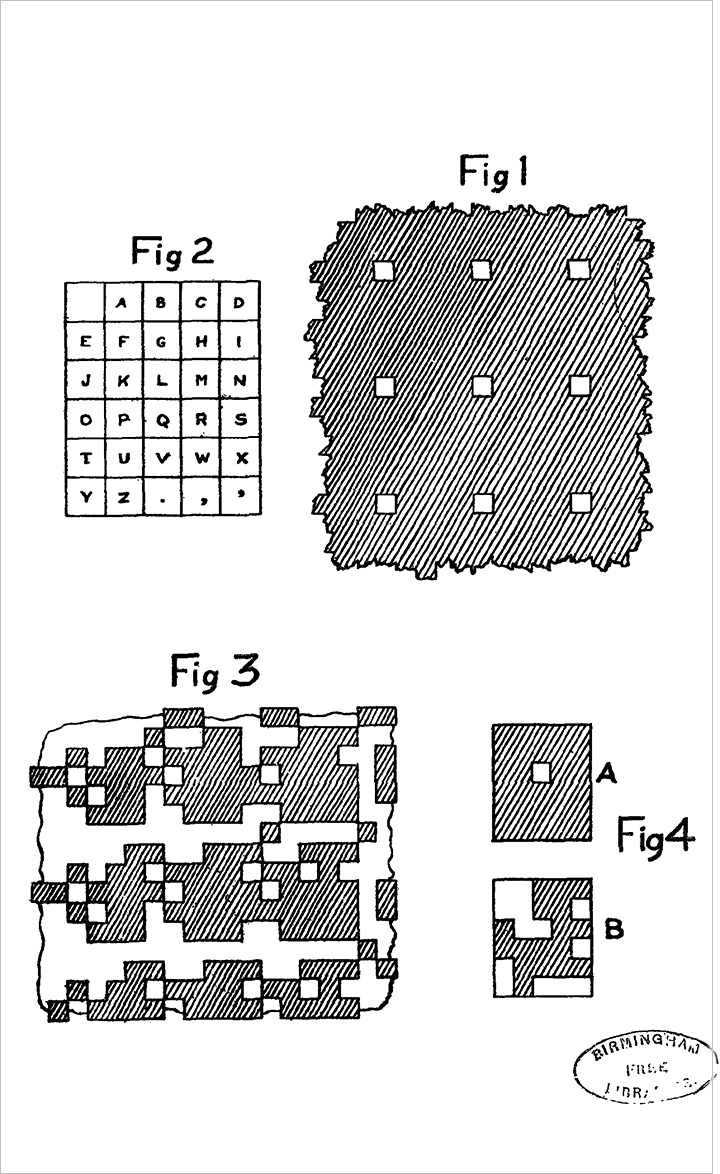such as vacancy, the letters of… a first-class swimmer

*
Figures 1-4 (cropped from page, border replaced)
Walter Leo Hildburgh (1876-1955 *), Improvements in advertising machinery
GB Patent No. 22,073 (1908)
These figures explain some of a mechanism that allows an array of pixel-like illuminated points to be presented in succession, as a kind of low-resolution animated gif.
The first half of the epigram is from Hildburgh’s “description” in the patent —
“In order to illustrate my invention I shall assume a case in which it is required to exhibit thirty distinct designs, such as vacancy, the letters of the English alphabet, a full-stop (.), a comma (,), and an apostrophe (').”
page 1, lines 31-34
Hildburgh’s device involves (at a minimum) two plates: the first being fixed and containing a gridded array of open apertures (as seen in Figure 1); the second (Figure 3) being movable, and bearing an array of cells each one of which contains 30 (five columns, six rows) positions. The whole is illuminated from the rear. The regular movement of the first plate over the second, allows 30 different arrangements of openings in the second plate (detail in Figure 3), to appear, step by step, through the regular openings of the first plate.
A discussion of a later development of this device, as presented in US Patent 1,172,455 (1916) is provided at my long-neglected — indeed, abandoned — page on early programmable advertising signs.
I would like to prepare a version of such a device, presumably involving two printed transparencies of, say, 20 x 20 “units,” each unit containing the 5x6 array that would allow 30 different designs. Those designs could be a low-resolution animation whose ambiguity would lessen as their display cycled through the 30 stills, so to speak. I imagine one of the two plates (or sheets) being drawn against the other, guided by a boustrophedon path, one position at a time —
left to right, down,
right to left, down,
left to right, down,
and so on.
I came upon Hildburgh early in my telegraphic meanderings. Hildburgh had private means and, after obtaining a Ph.D. in electrical engineering at Columbia, traveled in Asia and elsewhere before settling in London where he devoted himself to engineering (with diminishing intensity) and to the collection of — and scholarship on — sculpture and metalwork. His London Times obituary notes that he was also “able to find time to become a figure-skater of international status, as well as a first-class swimmer.” (November 28, 1955, p. 13).
tags:
alphabet; mechanisms; figure skating; signs; swimming; W. L. Hildburgh, Improvements in advertising machinery (1908)